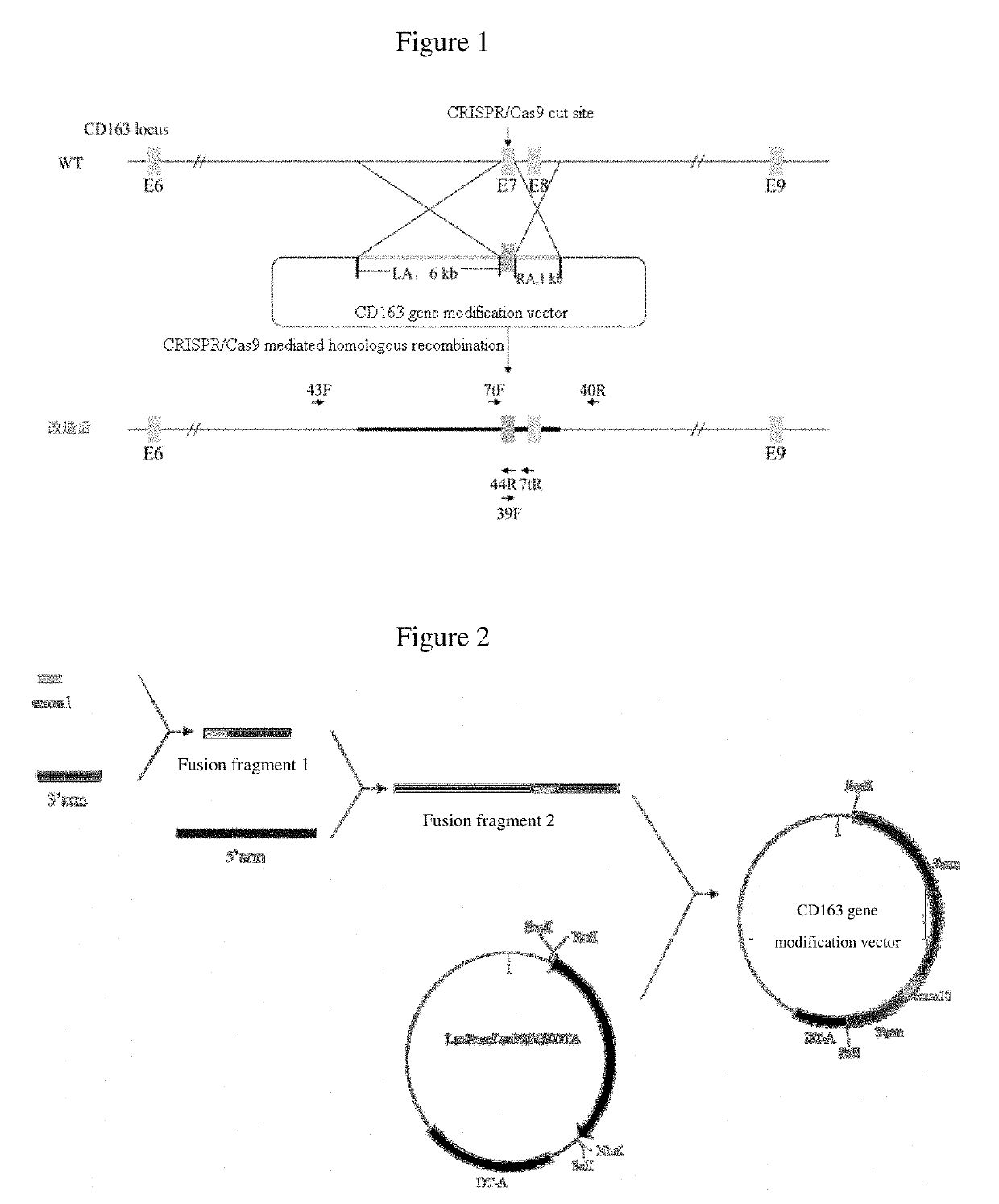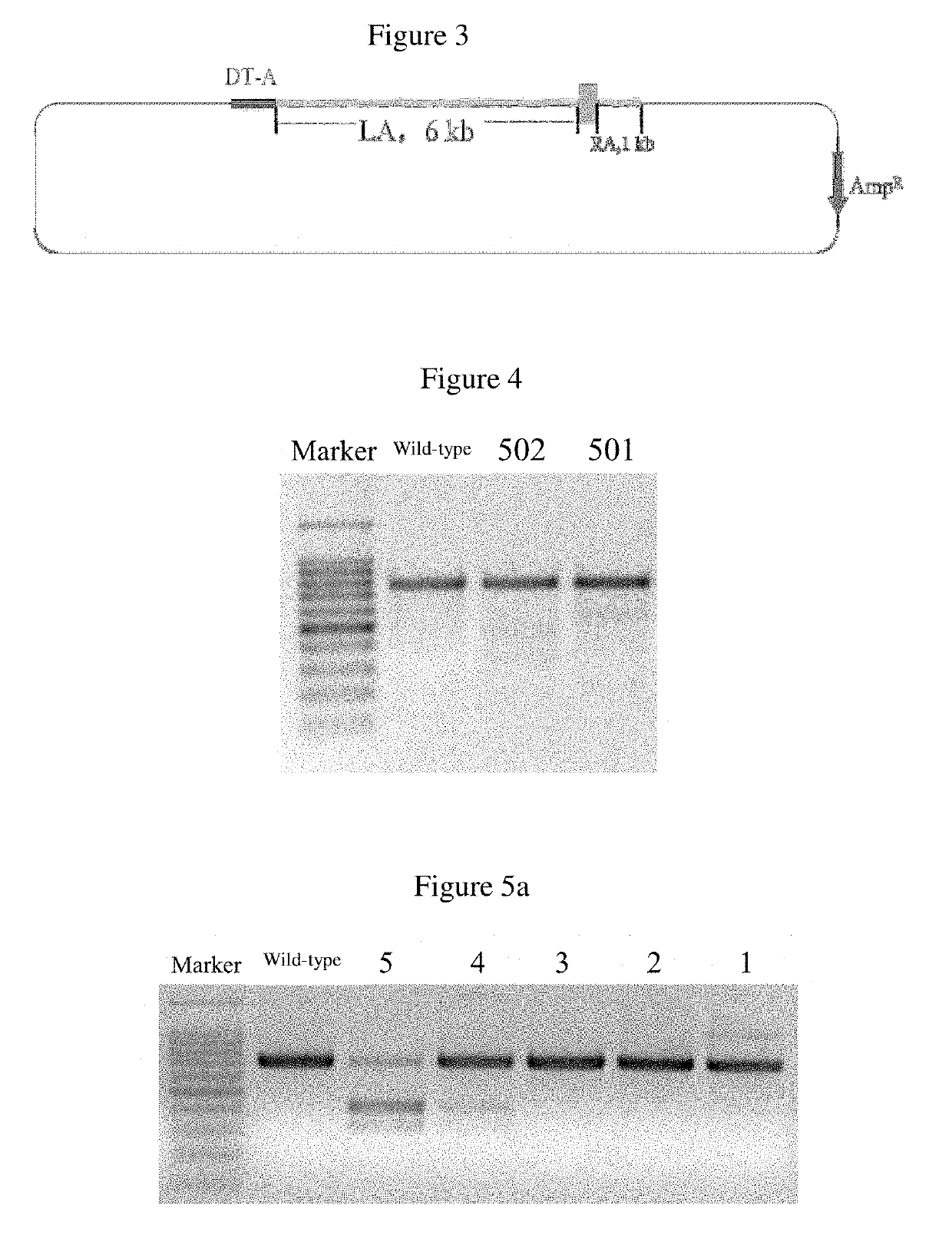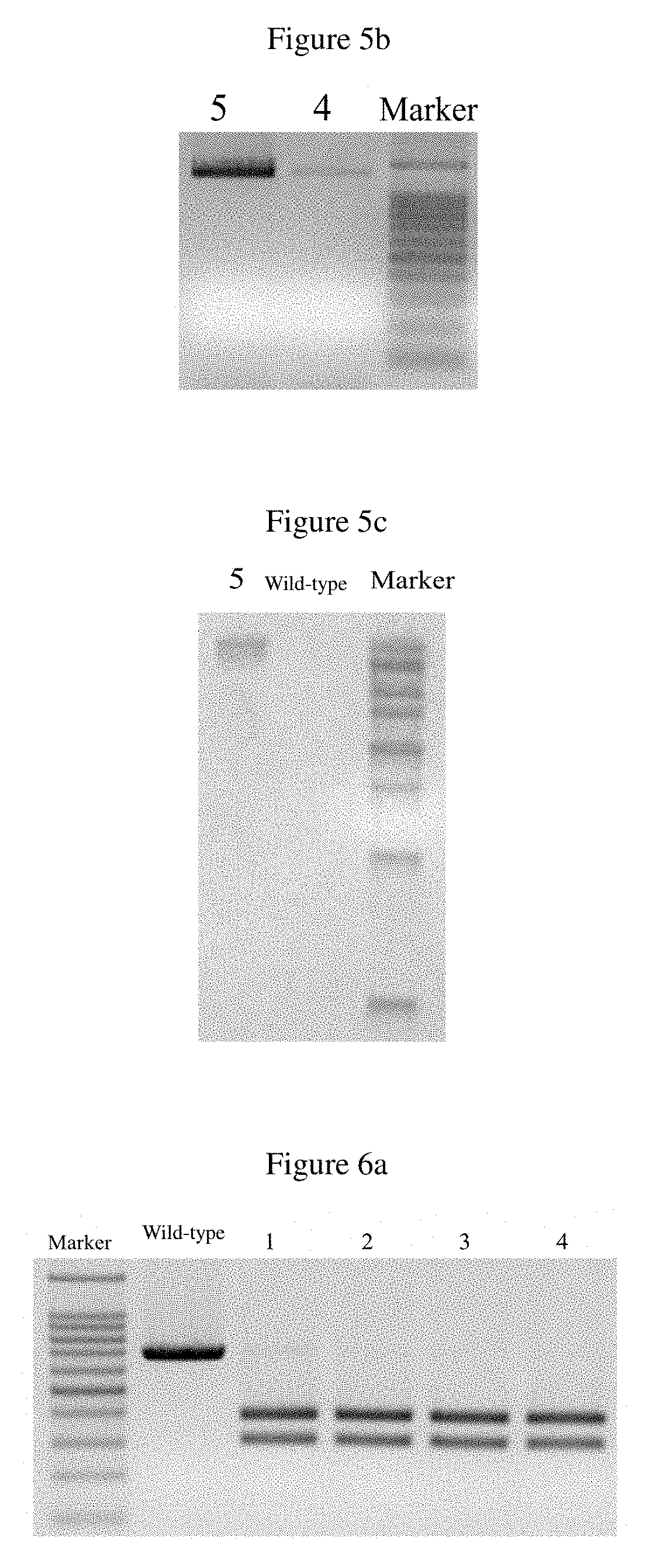Preparation method for Anti-porcine reproductive and respiratory syndrome cloned pig
- Summary
- Abstract
- Description
- Claims
- Application Information
AI Technical Summary
Benefits of technology
Problems solved by technology
Method used
Image
Examples
example 1
Construction of Porcine CD163 Gene-Modified Vector
[0036]As shown in FIG. 2, the vector construction process is divided into three steps:
[0037]step 1, a eleventh exon of human CD163-L1 gene (the nucleotide sequence is shown in SEQ ID NO. 2) was fused with a homologous right arm. The eleventh exon of human CD163L1 was amplified using genomic DNA of human cells as a template, and the primers used for amplification were CD163L 1-F5′-AAATGCTATTTTTCAGCCCACAGGCAGCCCAGGCT-3′ and CD163L 1-R5′-CACATTCCCTGGGTCTCACGGGAACAGACA ACTCCAACTT-3′. The PCR product was purified and verified to be correct by sequencing. A 999 bp homologous right arm (the nucleotide sequence is shown in SEQ ID NO: 3) was obtained by amplification using the genomic DNA of a pig as a template, and the primers were RIGHT-F5′-AAGTTGGAGTTGTCTGTTCCCGTG AGACCCAGGGAATGTG-3′ and RIGHT-R 5′-TATGTCGACAGTGTT AGATAGATGTGCTC-3′, wherein the underlined was the Sal I digestion site. Sequencing was carried out to verify the product was co...
example 2
Construction of CRISPR-Cas9 Targeting Vector
[0040]1. The targeting site of the seventh exon of the porcine CD163 gene was predicted by using Zhang Feng laboratory website (http: / / crispr.genome-engineering.org / ).
[0041]According to the scores in the self-assessment and prediction results, two targeting sites were selected from the candidate targeting sites, and named 501 and 502, and their sgRNA sequences were GGAACTACAGTGCGGCACTG and ACTTCAACACGACCAGAGCA, respectively. Complementary and paired oligonucleotides were synthesized according to the sgRNA sequence, as shown in Table 1, wherein the lowercase letters indicate the digestion sites.
TABLE 1oligonucleotides sequenceNameSequence (5′-3′)px330-501FcaccgGGAACTACAGTGCGGCACTG(SEQ ID NO. 5)px330-501RaaacCAGTGCCGCACTGTAGTTCCc(SEQ ID NO. 6)px330-502FcaccgACTTCAACACGACCAGAGCA(SEQ ID NO. 7)px330-502RaaacTGCTCTGGTCGTGTTGAAGTc(SEQ ID NO. 8)
[0042]2. Two targeting vectors were constructed, and named px330-501 and px330-502. The two pairs of oli...
example 3
Screening and Identification of Positive Monoclonal Cells
[0051]1. Screening of Positive Monoclonal Cells
[0052]Porcine fibroblasts (about 1×106) in one well of a 6-well cell culture plate were digested and collected, and the targeting vector px330-501 constructed in Example 2 and the vector with the porcine CD163 gene modified by homologous recombination constructed in Example 1 were mixed at a molar ratio of 1:1. A total mass of 4μg was taken out, subjected to transfection according to the method in Step 5 of Example 2, then placed in a CO2 incubator and cultured at 37.5° C. 48 h later, the cell convergence reached 80-90%, and at the moment the cells in one well were equally divided into eight 10 cm dishes. 24 h later, the cells were adhered and the culture medium was replaced with G418-containing (600 μg / mL) fibroblast culture medium (10% FBS+DMEM). The culture medium was changed every 3 to 4 days, and the culture medium was still the G418-containing (600 μg / mL) fibroblast culture ...
PUM
| Property | Measurement | Unit |
|---|---|---|
| Temperature | aaaaa | aaaaa |
| Temperature | aaaaa | aaaaa |
| Time | aaaaa | aaaaa |
Abstract
Description
Claims
Application Information
 Login to View More
Login to View More - R&D
- Intellectual Property
- Life Sciences
- Materials
- Tech Scout
- Unparalleled Data Quality
- Higher Quality Content
- 60% Fewer Hallucinations
Browse by: Latest US Patents, China's latest patents, Technical Efficacy Thesaurus, Application Domain, Technology Topic, Popular Technical Reports.
© 2025 PatSnap. All rights reserved.Legal|Privacy policy|Modern Slavery Act Transparency Statement|Sitemap|About US| Contact US: help@patsnap.com



